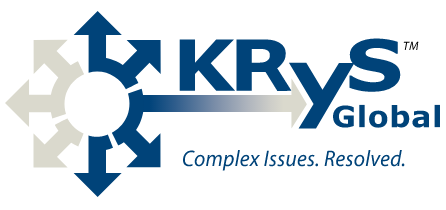Quick search
CTRL+K
Quick search
CTRL+K


Since 2010, the Global Law Experts annual awards have been celebrating excellence, innovation and performance across the legal communities from around the world.
posted 2 years ago
Originally posted on Offshore Red in April 2021
Foreign representatives and their counsels should take note of recent US Bankruptcy Court decisions in Fairfield that, if upheld on appeal, could significantly impair their ability to pursue avoidance claims in US Chapter 15 proceedings. The court in Fairfield held that the US Bankruptcy Code’s safe-harbour provisions apply to foreign avoidance claims brought by foreign representatives in Chapter 15 proceedings, including foreign avoidance claims pertaining to foreign transfers between foreign parties. That said, the court also found that foreign representatives have the ability to bring foreign common law claims — such as unjust enrichment and constructive trust — affording foreign representatives another path to recovery. Offshore practitioners would be well served to review and scrutinise these rulings and the Bankruptcy Code’s safe-harbour provisions before employing any strategy to pursue clawback claims in the US, according to James Leda, the managing director at the world-girdling offshore liquidation firm of Krys Global, and litigators Ester Murdukhayeva and Evan Bianchi of the venerable Selendy & Gay law firm in New York.
The United States Bankruptcy Code gives trustees the authority to rescind — or “avoid” — certain preferential or fraudulent transfers made by a debtor (i.e. the bankrupt entity). The purpose of avoidance powers is to maximize the size of the bankruptcy estate and facilitate an equitable distribution to creditors. Although avoidance powers are among the most important tools available to bankruptcy trustees, these powers are subject to certain restrictions including various statutory provisions referred to as “safe harbours.” One of these provisions, section 546(e) bars the avoidance of a range of transfers associated with securities contracts, including “settlement payments” made by or to statutorily specified entities including “financial institutions.” Although Congress first enacted this provision to protect a limited subset of commodities-related transactions, statutory amendments and judicial interpretations have expanded the reach of this particular safe harbour to offshore payments.
On the face of the Bankruptcy Code, section 546(e) and related safe-harbour provisions apply only to avoidance claims brought under United States law in domestic bankruptcies. Nevertheless, a federal bankruptcy court recently held that, when it passed the law, Congress intended to extend the section 546(e) safe harbour to apply to foreign avoidance claims brought by foreign representatives (who often operate from the offshore world) in Chapter 15 proceedings filed in a United States bankruptcy court in support of a foreign main insolvency proceeding. The court ruled that the safe harbour applied even to foreign avoidance claims pertaining to foreign transfers between foreign parties. ‘Foreign representative’ is a term in Chapter 15 which is not mentioned in section 546(e).
The expansion of the code’s safe harbours to foreign avoidance claims has (barring successful appeals) created unprecedented protections for financial institutions involved in non-US insolvency proceedings. This article explains the history and scope of section 546(e) and related safe harbours and discusses the possible implications of judicial rulings that extend section 546(e)’s reach to foreign avoidance claims.
The origins of the Bankruptcy Code’s safe harbours
The “safe harbour” currently codified at 11 USC § 546(e) dates back to the Bankruptcy Reform Act 1978. At the recommendation of a derivatives industry representative who warned of “a potential domino effect” in the commodities futures market if brokers could not “close out” insolvent customers’ accounts, Congress limited a bankruptcy trustee’s ability to avoid certain commodities-related transfers made by a debtor to a broker, forward contract merchant, or clearing organisation. The commodities safe harbour did not apply to claims to avoid transfers made “with actual intent to hinder, delay, or defraud” the debtor’s creditors and Congress preserved the ability to avoid transfers made with actual fraudulent intent in the subsequent iterations of the statute, described below. The safe harbour did, however, apply to other types of avoidance claims, such as those aimed at clawing back constructively fraudulent and preferential transfers.
The legislative history accompanying the 1978 safe harbour suggests that Congress’s primary concern was “the protection of commodity market stability.” The prospect of market instability has been used to justify increasing expansions of the safe harbour ever since. At the urging of the Securities and Exchange Commission, Congress expanded the commodities safe harbour in 1982 to cover certain securities-related transfers. The 1982 amendments further expanded the safe harbour to apply not only to transfers made “to” a protected entity such as a broker, but transfers made “by” a protected counterparty who has filed for bankruptcy. Congress justified these expansions by citing the need “to prevent the insolvency of one commodity or security firm from spreading to other firms and possibl[y] threatening the collapse of the affected market.”
In 1984, Congress broadened the commodities and securities safe harbour again by including “financial institutions” in the list of protected counterparty categories. Congress broadly defined “financial institution” to include banks and customers of banks serving as agents and custodians. The 1984 amendments also granted new safe-harbour protections to “repo participants” in connection with repurchase agreements transfers. In 1990, Congress granted new safe-harbour protections to “swap participants” in connection with swap agreements transfers. The 1990 amendments resulted in part from lobbying by the International Swaps and Derivatives Association (ISDA), which warned that avoidance of swap transactions would increase “the potential exposure for all swap counterparties” and “could undermine the basic foundation” of the multi-trillion-dollar swap market.
In 2005, Congress again sought “to reduce systemic risk in the financial marketplace” by expanding safe harbour coverage. Among other things, the 2005 amendments broadened the statutory definitions of “forward contracts,” “repurchase agreements,” “securities contracts,” and “swap agreements” to protect more types of financial transfers, granted safe harbour protections to transfers arising from “master netting agreements,” and introduced a new category of parties eligible for the safe harbours: “financial participants.” Congress defined the term “financial participant” to include clearing organisations and entities that would not otherwise qualify as protected counterparties but would receive protection so long as they cleared certain monetary thresholds. And in 2006, Congress expanded the safe harbours to include not only transfers “by” or “to” a covered entity, but also transfers made “for the benefit of” a covered entity. Once again, Congress asserted that the purpose of the 2006 amendment was to “help reduce systemic risk in the financial markets.”
As a result of these amendments, the Bankruptcy Code’s safe harbours have grown from a relatively minor protection for certain transfers in the commodities market to a shield that insulates major swaths of transfers from avoidance claims. Judicial interpretations of the safe harbours have likewise been expansive. Until the United States Supreme Court ruled to the contrary in 2018, four federal appellate courts had interpreted the section 546(e) safe harbour to apply to transfers that merely passed through one of the statutorily specified parties, even if the transfer was not “to” or “by” one of those parties. And even after the Supreme Court set limits on the safe harbour, subsequent judicial decisions have expansively interpreted the definition of “financial institution,” one of the safe harbour’s statutorily specified protected parties.
The application of the section 546(e) safe harbour to foreign avoidance claims in Chapter 15 proceedings
When the safe harbour was first conceived, United States courts played no role in foreign insolvency proceedings. In 2005, however, Congress added Chapter 15 to the Bankruptcy Code, giving foreign representatives an opportunity to seek recognition of a foreign insolvency proceeding in a United States bankruptcy court. As a general matter, the avoidance powers available to domestic bankruptcy trustees in Chapter 7 and Chapter 11 proceedings are not available to foreign representatives. Foreign representatives can, however, bring avoidance actions arising under foreign law.
As mentioned previously, the section 546(e) safe harbour applies only to avoidance claims brought under United States law in domestic bankruptcy proceedings. Because federal avoidance powers are not generally available to foreign representatives, that section alone suggests that the limitations on federal avoidance powers would likewise not apply. Yet in section 561(d) of the code, Congress provided that the code’s “provisions relating to securities contracts, commodity contracts, forward contracts, repurchase agreements, swap agreements, or master netting agreements shall apply in a case under Chapter 15 … to limit avoidance powers to the same extent as in a proceeding under Chapter 7 or 11 of this title.” In a series of recent decisions in the Fairfield Sentry Limited litigation, a federal bankruptcy court in New York offered a view as to the implications of section 561(d) for avoidance claims brought by foreign representatives under foreign law. The relevant decisions are In re Fairfield Sentry Ltd., 596 BR 275 (Bankr. SDNY 2018) and In re Fairfield Sentry Ltd., 2020 WL 7345988 (Bankr. SDNY Dec 14, 2020).
Fairfield involves the liquidation of several funds organized under British Virgin Islands (BVI) law. The funds invested nearly all of their assets in Bernard L Madoff Investment Securities LLC and were forced into liquidation after Madoff’s infamous Ponzi scheme was exposed. The funds’ foreign representatives initiated Chapter 15 ancillary proceedings in the United States in order to pursue litigation claims in the United States against hundreds of entities that had received billions of dollars in redemption payments arising out of the Madoff scheme. Pursuing consolidated proceedings in the United States was a practical and cost-efficient way to bring claims against the many defendant entities—which had ties to the United States but not to the BVI. By bringing proceedings in United States courts, the foreign representatives avoided litigating in countless jurisdictions under just as many different bodies of law.
In the Chapter 15 proceedings, the foreign representatives asserted avoidance claims under BVI insolvency law, among other claims. In response, the defendants asserted that the BVI avoidance claims were barred by the section 546(e) safe harbour on the theory that the safe harbour was made applicable to Chapter 15 proceedings by section 561(d).
The bankruptcy court held that the safe harbour reaches BVI avoidance claims, notwithstanding the fact that neither section 546(e) nor 561(d) expressed Congress’s intent to apply the safe harbour extra-territorially to avoidance claims based on exclusively foreign transfers between foreign parties. And in a subsequent opinion, the bankruptcy court held that the safe harbour’s carve-out for actually fraudulent transfers did not apply to the BVI avoidance claims be- cause, in the court’s view, the carve-out was limited to avoidance claims brought under United States federal law.
Considerations for foreign representatives
The upshot of the Fairfield decisions, if they are upheld on appeal, is that foreign representatives in Chapter 15 proceedings may find themselves in a knotty situation if seeking to use avoidance powers under foreign law. It has long been understood that Congress precluded foreign representatives from using avoidance powers arising under United States law because it was concerned “that foreign representatives would bring an ancillary action simply to gain access to avoidance powers not provided by the law of the foreign proceeding.” Foreign representatives will likely argue that expanding the safe harbour to reach foreign avoidance claims requires the very application of American law to foreign transfers that Congress assiduously sought to preclude and that such ap- plication nonsensically imposes the limitations of American law on foreign avoidance claims while denying foreign representatives the protections of American law, such as the code’s expansive avoidance powers or the safe harbour’s carve-out for actually fraudulent transfers.
Furthermore, foreign representatives might argue that they should not be put in the perverse position of being subject to a version of the “safe harbour” that may not exist under the law of the foreign proceeding and does not track the version of the safe harbour that applies to United States bankruptcies.
While the decisions in Fairfield are awaiting further appellate review, foreign representatives should be apprised of the relevant issues if they are litigating or contemplating a Chapter 15 proceeding.
First, the safe harbour applies to a broad range of transfers and entities. Foreign representatives should review the definitions of the pertinent statutory terms carefully to see whether they apply to the transferor or transferee of any of the transfers at issue in their matters.
Second, if the Fairfield decisions are upheld, transferees will argue that transfers occurring outside of the United States are not shielded from the safe harbour. While the United States may be an attractive forum to consolidate multiple actions, it is imperative for foreign representatives to understand the risks associated with the safe harbour before initiating Chapter 15 proceedings.
Third, if the Fairfield decisions are upheld, transferees will argue that foreign representatives may not be able to rely on the “actually fraudulent” transfer exception to the safe harbour, even if the transfers underlying their avoidance claims were made with actual fraudulent intent.
Notwithstanding these considerations, the safe harbour is not an absolute bar on any claim a foreign representative may bring in a Chapter 15 proceeding against a financial institution or other qualifying entity even under the reasoning of the Fairfield decisions. The bankruptcy court in Fairfield held that foreign common law claims — such as unjust enrichment and constructive trust — fall outside the ambit of the safe harbour, providing foreign representatives with a path to recovery.
Author


There are no results matching your search.
Resetposted 5 hours ago
posted 17 hours ago
posted 17 hours ago
posted 4 days ago
posted 4 days ago
posted 4 days ago
posted 5 days ago
posted 5 days ago
posted 5 days ago
posted 7 days ago
There are no results matching your search.
ResetFind the right Legal Expert for your business
Sign up for the latest legal briefings and news within Global Law Experts’ community, as well as a whole host of features, editorial and conference updates direct to your email inbox.
Naturally you can unsubscribe at any time.
Global Law Experts is dedicated to providing exceptional legal services to clients around the world. With a vast network of highly skilled and experienced lawyers, we are committed to delivering innovative and tailored solutions to meet the diverse needs of our clients in various jurisdictions.